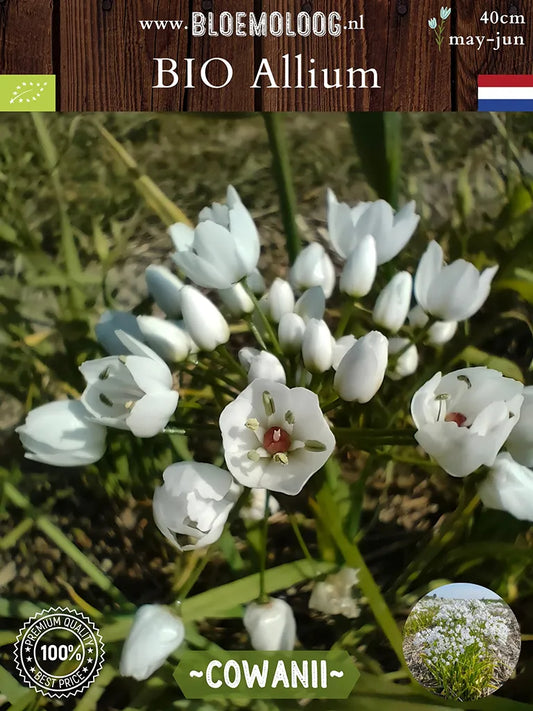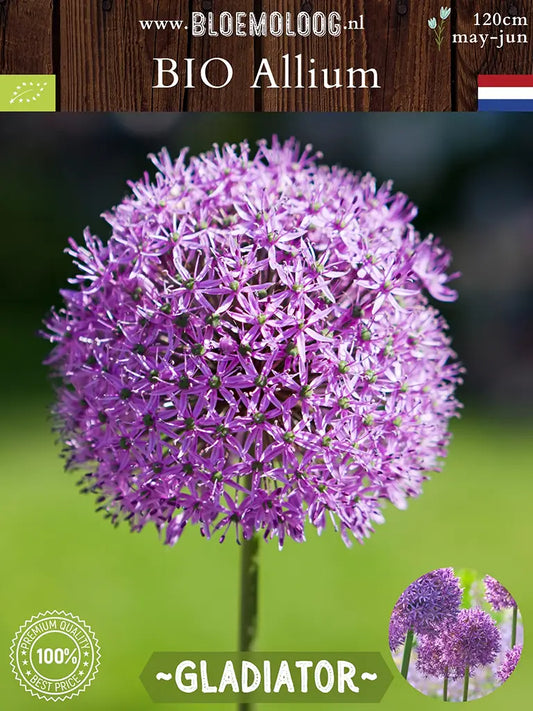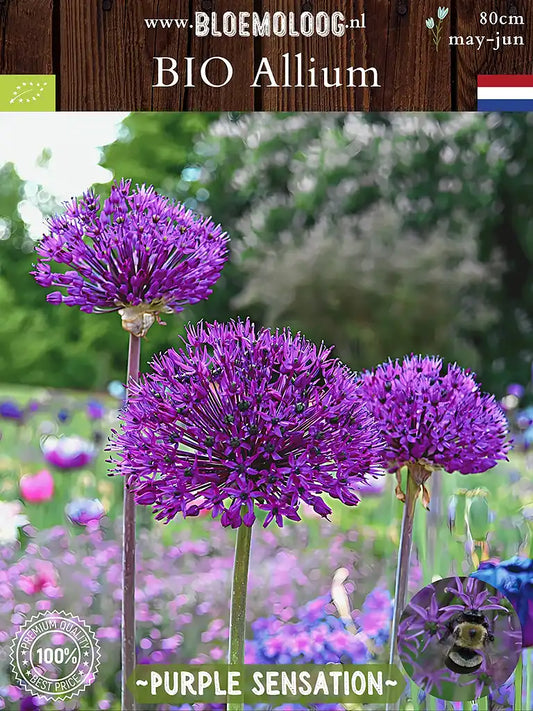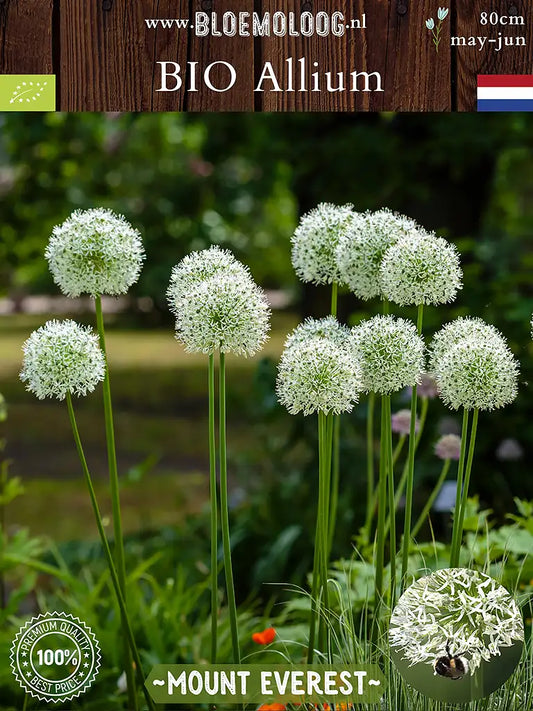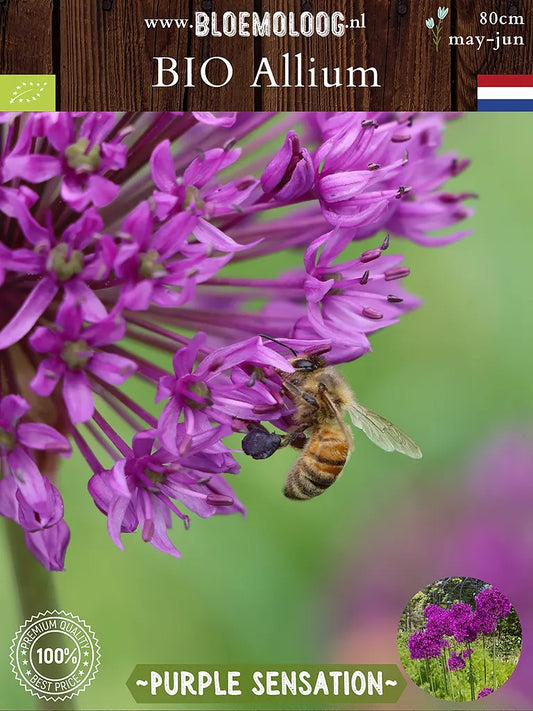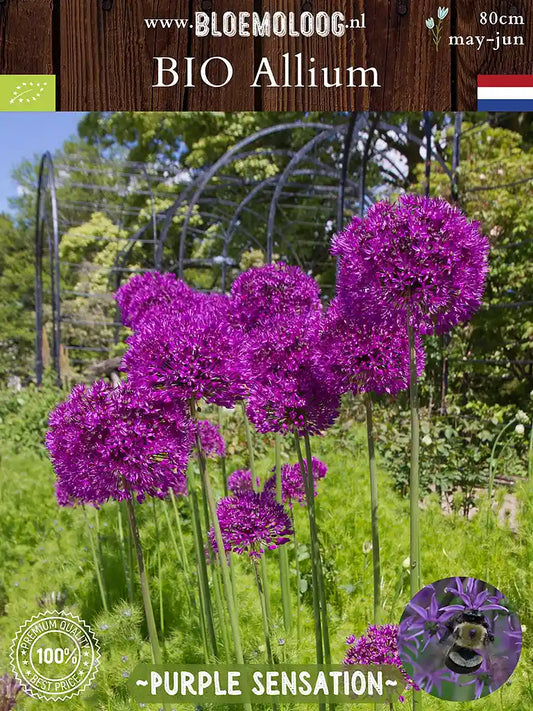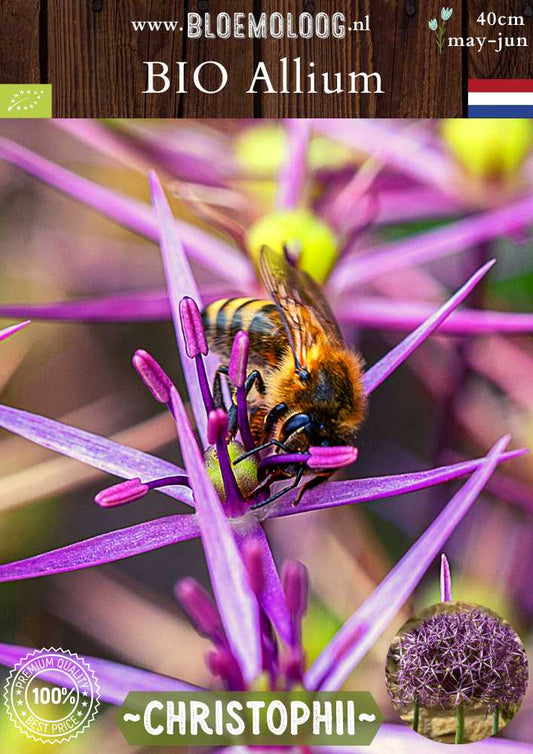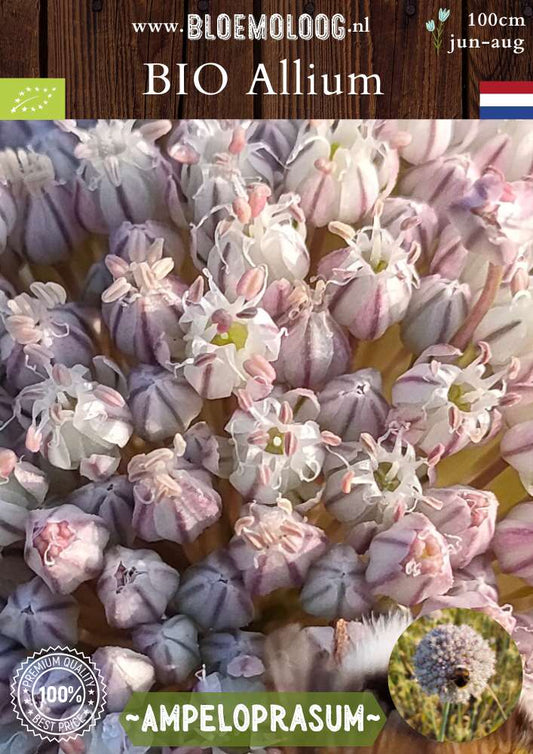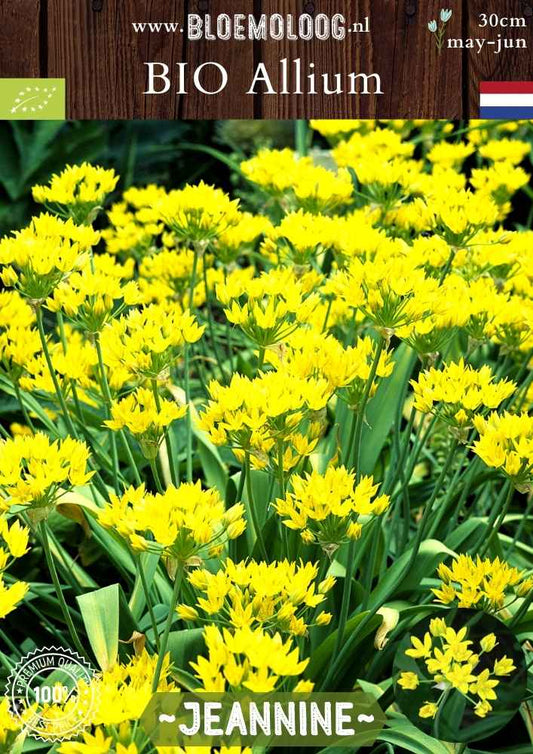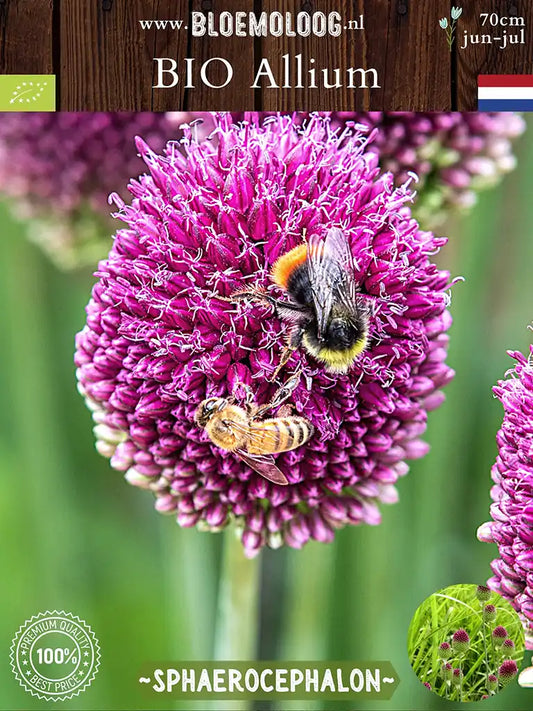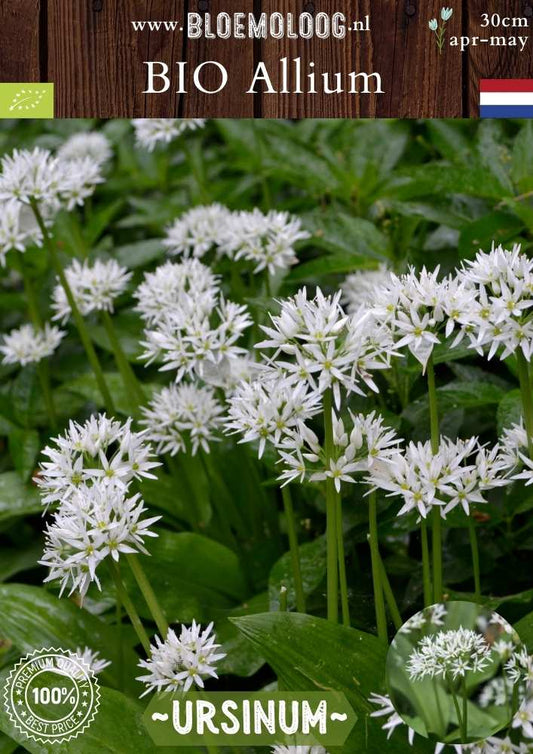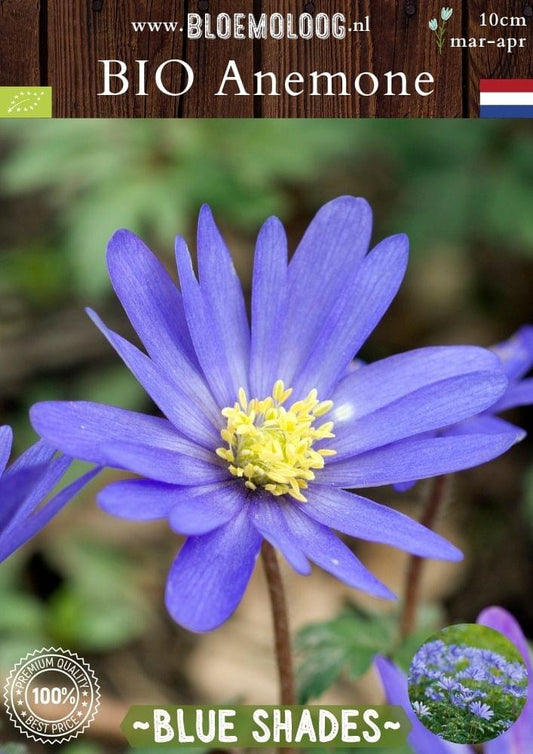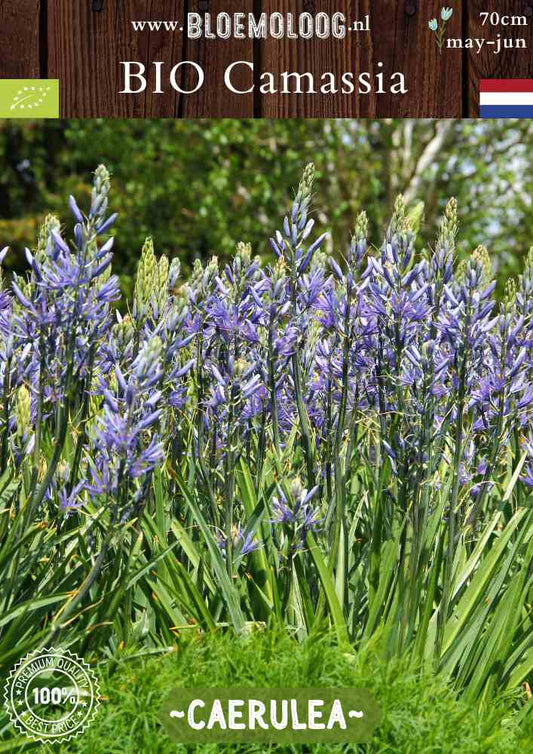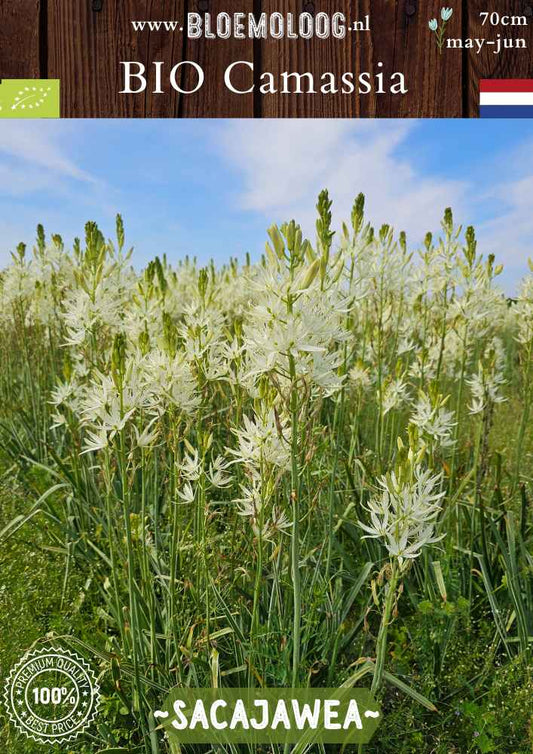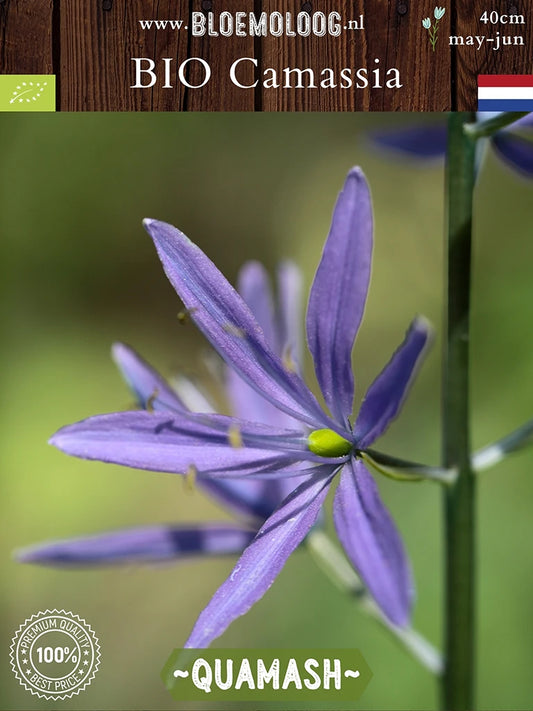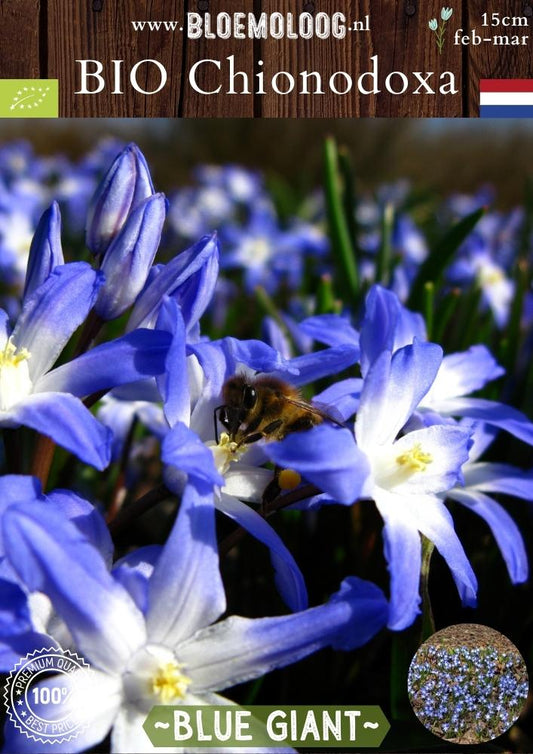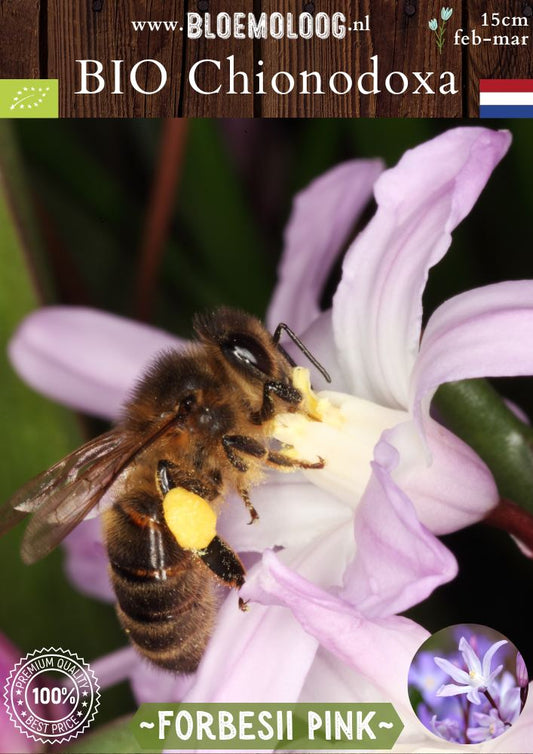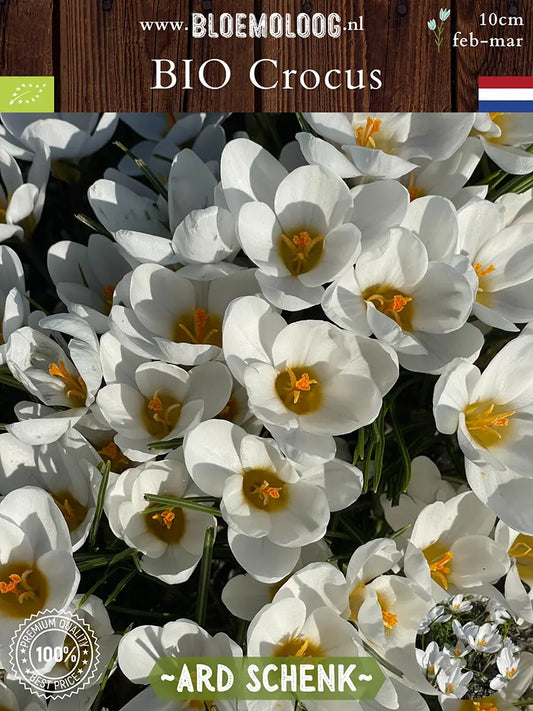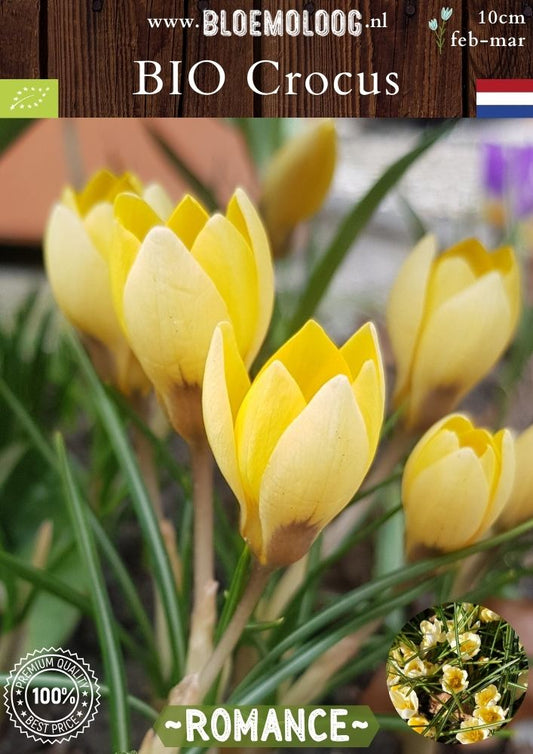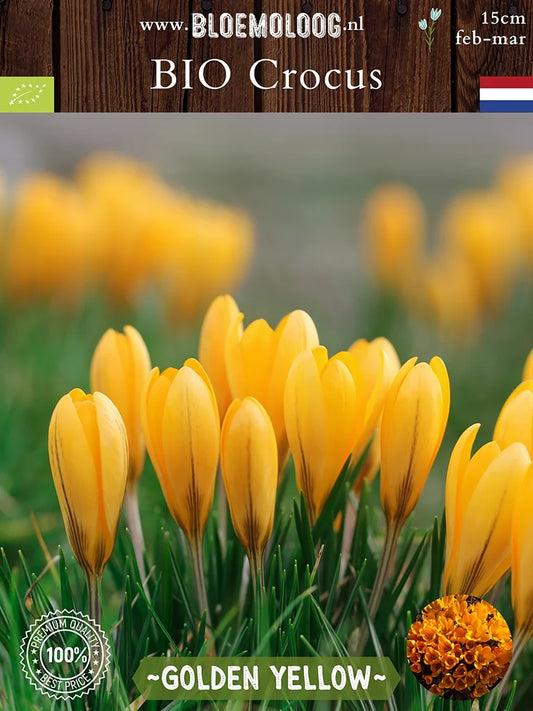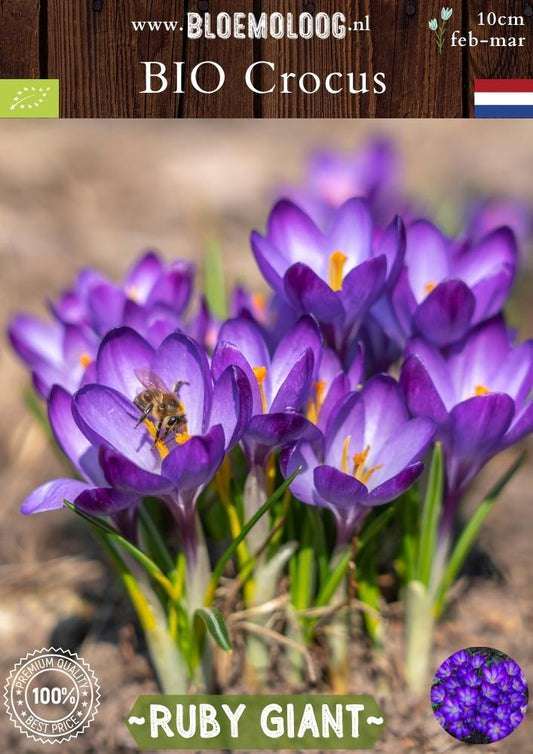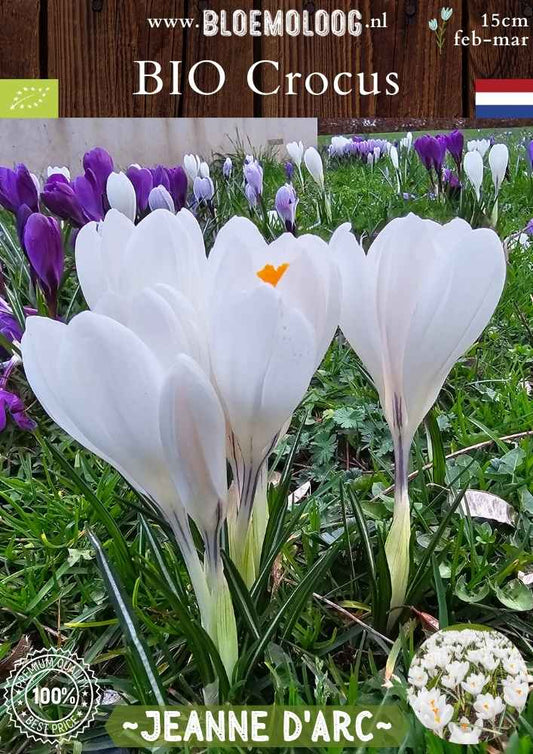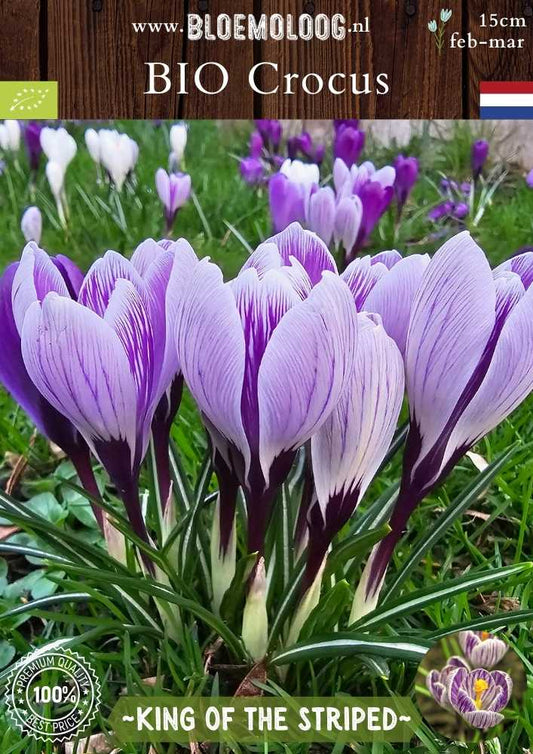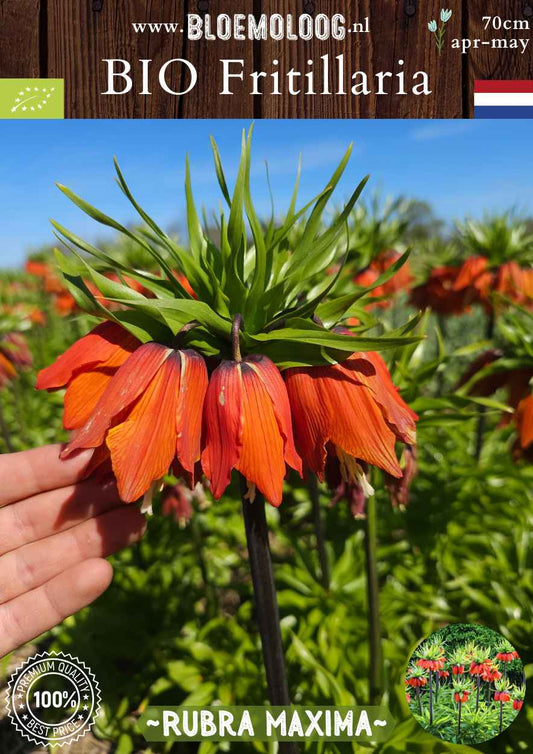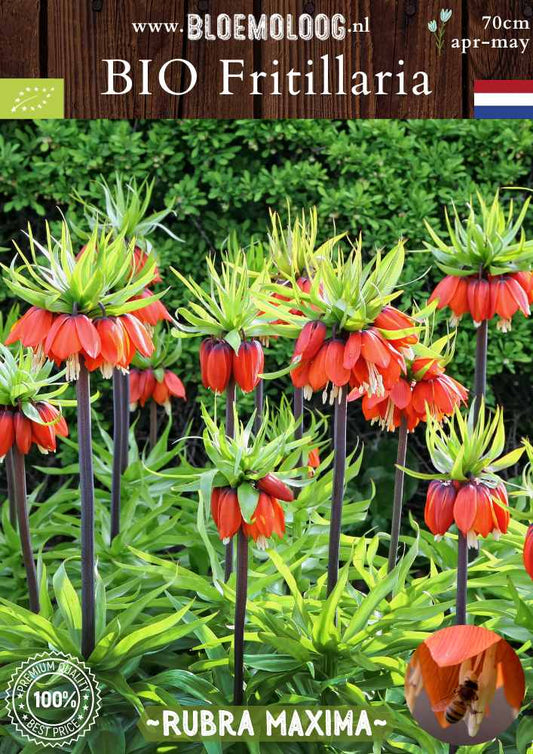
Collection: Naturalizing bulbs
What are naturalizing bulbs?
Naturalising bulbs are perennial flower bulbs that are resistant to viruses. They are usually wild bulbs that, just like in nature, grow wild without any maintenance. They have the ability to multiply and even spread over time, creating a natural and colourful mix of flowers.
Which flower bulbs naturalize
Flower bulbs that naturalize are mainly the poisonous flower bulbs that feed on their own poisons, such as daffodils or flower bulbs from the hyacinth family such as bluebells. Non-poisonous flower bulbs naturalize best where there is shade during the warm summer months. We mention the ornamental onions that can be planted well between other crops, which provide a cool base.
When do naturalising bulbs bloom?
Most naturalising bulbs grow at low temperatures. These are the low species that flower from early spring. The later summer flowering naturalising bulbs are usually a bit higher, such as the alliums.
Unfortunately, not all flower bulbs are grown organically, which means that there are no autumn flowering naturalisation bulbs available, such as the autumn crocus. We hope that more growers will soon switch to organic.
Sustainable flower bulbs
Organic naturalisation bulbs are extra sustainable, because of their long lifespan and ability to multiply. This means that annual purchase of flower bulbs is not necessary, which saves a lot of work and money.
Where do you plant naturalizing bulbs?
In general, most naturalizing bulbs thrive in well-drained soil in a sunny to lightly shaded location during flowering and in the summer during the dormant phase in the shade, for example under deciduous trees. Each naturalizing bulb prefers its own location. Check the planting instructions on the product pages for the right choice.
Naturalizing bulbs under trees
When planting naturalising bulbs it is important to consider the specific requirements of each flower bulb, such as the flowering period, the location and the depth of the planting. Large flower bulbs may be less suitable for planting under deciduous trees, because the root system of the tree may get in the way when digging a large hole.
Naturalizing bulbs in the grass
Naturalising bulbs have the advantage that they can also be planted in the grass. Be careful if you want to plant late flowering naturalising bulbs, you also choose the higher types such as the drumsticks, which can flower in July between the unmown grass.
Caring for naturalising bulbs
Naturalising bulbs require little care. When the bulbs start to root above ground after a few years, you can replant the bulbs at a planting depth that is 2 to 3 times as deep as the bulb itself. The Florist advises naturalising bulbs to be provided with organic food every year, so that the young brood bulbs also become ready to flower more quickly.
Naturalising bulbs in wet areas in the garden
Some naturalising bulbs such as snowdrops or summer snowflakes prefer a location where it is not too dry. These can often be planted in clay soil or other wet places in the garden.
Buy organic rewilding packages
Using organic naturalising bulbs from reliable nurseries ensures you are making an environmentally friendly choice for your garden.
The 'Organic Happy Bees Mix' from the Bloemoloog is also a naturalisation bulb mix, in which you will find various bulb plants, such as alliums, crocuses and daffodils . This mix of flowers returns year after year, so that you can enjoy a beautiful and varied floral splendour every year.
Buy naturalizing bulbs
From June to January, naturalisation bulbs can be ordered online at Bloemoloog.nl. These are sent from mid-September during the planting season. From July to January, you can pick them yourself at one of our markets where we can find them.
-
Organic Allium 'Cowanii' - White ornamental onion | 10 pcs.
Regular price €4,95Regular priceUnit price €0,50 each -
Organic Allium 'Gladiator' - Giant ornamental onion
Regular price €3,95Regular price -
Organic Allium 'Mount Everest' & 'Purple Sensation' mix | 6 pcs.
Regular price €9,95Regular priceUnit price €1,66 each -
Organic Allium 'Mount Everest' - White ornamental onion | 3 pcs.
Regular price €5,99Regular priceUnit price €2,00 each -
Organic Allium 'Purple Sensation' - Dutch garlic | 5 pcs.
Regular price €5,99Regular priceUnit price €1,20 each -
Organic Allium 'Purple Sensation' XL - Dutch garlic | 3 pcs.
Regular price €4,99Regular priceUnit price €1,66 each -
Organic Allium albopilosum 'Christophii' - Persian onion | 3 pcs.
Regular price €4,99Regular priceUnit price €1,66 each -
Organic Allium ampeloprasum 'Ping Pong' - Pearl onion | 10 pcs.
Regular price €4,99Regular priceUnit price €0,50 each -
Organic Allium moly 'Jeannine' - Golden Garlic | 10 pcs.
Regular price €4,99Regular priceUnit price €0,50 each -
Organic Allium 'Sphaerocephalon' - Drumsticks | 10 pcs.
Regular price €4,99Regular priceUnit price €0,50 each -
Organic Allium ursinum - Wild garlic | 5 pcs.
Regular price €6,95Regular priceUnit price €1,39 each -
Organic Anemone blanda - Grecian windflower | 10 pcs.
Regular price €4,99Regular priceUnit price €0,50 each -
Organic Camassia leichtlinii 'Caerulea' - Indian hyacinth | 3 pcs.
Regular price €5,95Regular priceUnit price €1,98 each -
Organic Camassia leichtlinii 'Sacajawea' - White prairie lily | 3 pcs.
Regular price €5,95Regular priceUnit price €1,98 each -
Organic Camassia quamash - Prairie Lily | 10 pcs.
Regular price €5,50Regular priceUnit price €0,55 each -
Organic Chionodoxa forbesii 'Blue Giant' - Glory of the Snow | 10 pcs.
Regular price €4,95Regular priceUnit price €0,50 each -
Organic Chionodoxa forbesii 'Pink Giant' - Pink Glory of the Snow | 10 pcs.
Regular price €4,95Regular priceUnit price €0,50 each -
Organic Crocus chrysanthus 'Ard Schenk' | 10 pcs.
Regular price €3,95Regular priceUnit price €0,40 each -
Organic Crocus chrysanthus 'Romance' (botanical) | 10 pcs.
Regular price €3,95Regular priceUnit price €0,40 each -
Organic Crocus flavus 'Golden Yellow' | 10 Pcs.
Regular price €3,95Regular priceUnit price €0,40 each -
Organic Crocus tommasinianus 'Ruby Giant' - Tommy Crocus | 10 pcs.
Regular price €3,95Regular priceUnit price €0,40 each -
Organic Crocus vernus 'Jeanne d'Arc' - Giant Dutch crocus | 10 pcs.
Regular price €3,95Regular priceUnit price €0,40 each -
Organic Crocus vernus 'King of the Striped' - Giant dutch crocus | 10 pcs.
Regular price €3,95Regular priceUnit price €0,40 each -
Organic Fritillaria imperialis 'Rubra Maxima' - Imperial Crown
Regular price €5,50Regular price
-
Organic spring bulbs
Spring-flowering bulbs and tubers are popular plants that produce beautiful flowers from early spring through summer. Because of their early bloom, they combine well with perennials when they still need to establish themselves.
Tulips are probably the most well-known spring flowers. They come in many different colors, shapes, and sizes. Daffodils are known for their cheerful yellow flowers, but they also come in other colors like white and orange. Crocuses are small bulbous plants with striking flowers in shades of purple, yellow, and white. They are often the first flowers to appear in spring. Hyacinths have fragrant flowers in various colors, such as pink, purple, blue, and white. They are often planted in borders, flower beds, or pots.Benefits of organic spring bulbs
When you choose organic flower bulbs that bloom in spring, you can be sure that no chemicals or pesticides will end up in your garden. These pesticides are harmful to bees and prevent them from finding their nests. As a result, more and more bee species have been added to the red list in recent years. Together, we can do something about this!
Flower bulbs for wild bees
Did you know that wild bees lay eggs in their nests, which then hatch in early spring? These newborn insect helpers immediately search for food in the surrounding area. There are also insects that have hibernated and are desperately looking for a hearty breakfast: the blooming flowers where nectar and pollen can be found! Just after winter, there's little greenery or food for these insects. Planting early-blooming flower bulbs ensures there's food available, and the insects can gain strength for the coming summer.
Organic growers
The organic growers we work with cultivate not only the most beautiful but also the strongest products. They cultivate varieties and species of flowers and plants that experience has shown to be virus-resistant, so they don't need to use chemicals and pesticides. Organic growers seek natural remedies and solutions against diseases and/or pests. All our flower bulbs are certified organic; both the Florist and the growers are SKAL-certified.
When do you plant spring bulbs?
Spring-flowering bulbs can be planted from autumn until January. Bulbs that need to be dug up in the summer after flowering should be dug up starting in late July and stored until the next planting season in autumn.
What to do after flowering
When spring bloomers have finished blooming, cut off the wilted flowers at the top of the stem. Let the rest of the plant die back naturally so it can still receive maximum energy from the sun.
How do you store spring bulbs?
If you've purchased flower bulbs from us and had them delivered to your home and would like to leave them for a while, we recommend opening the box and storing it in a ventilated, cool place until you're ready to plant them.
Store flower bulbs you dig up after flowering in a warm place, such as a shed. To prevent mice from eating the bulbs during this period, you can also hang them in a bag or pantyhose. -
Where is the best place to plant spring bulbs?
Spring-flowering bulbs are flowers that bloom in the spring, between January and July. There are many different types of spring-flowering bulbs, suitable for different types of gardens and soil. For example, some bulb plants enjoy catching a glimpse of the sun during flowering, but prefer to be covered by a tree during their dormant period in summer.
Spring bloomers in the sun
Many spring bloomers need plenty of sun to bloom and grow well for the following year. These flowers thrive in full sun:
Spring bloomers in the shade
Some spring bloomers also grow and bloom well in the shade, such as:
Spring bloomers in moist soil types
There are also flower bulbs that can be planted in moist soil. Some varieties from the Florist's collection include:
Conclusion
There are many different types of spring bloomers suitable for different types of gardens and soil. Whether a spring bloomer can grow in sun or shade depends on the specific variety. Some prefer dry soil, while others prefer wet feet. So, there's a suitable spring bloomer for every garden.
Tips for a flowery garden
Plant a variety of flowers, each with its own blooming time, so there are flowers blooming throughout the spring and food for bees and other insects in your garden. Would you also like to arrange your garden/bed so you can enjoy flowers all spring long, and the bees too? Feel free to send us a message or ask us at the market stall. We're happy to help! Promote biodiversity in your garden and enjoy the first flowers and colors after the cold and dark winter!
Order spring bloomers in advance
Pre-sales for spring-flowering bulbs will begin on June 1st in the Bloemoloog webshop.
During the pre-sale, you can pre-order your desired products. This way, you can be sure your favorite flowers are still in stock, and we'll ship your package with PostNL as soon as planting time arrives.
Flower bulbs ordered in the pre-sale will be delivered in mid-September. From then on, they can be planted directly in the garden or in containers on the balcony.


